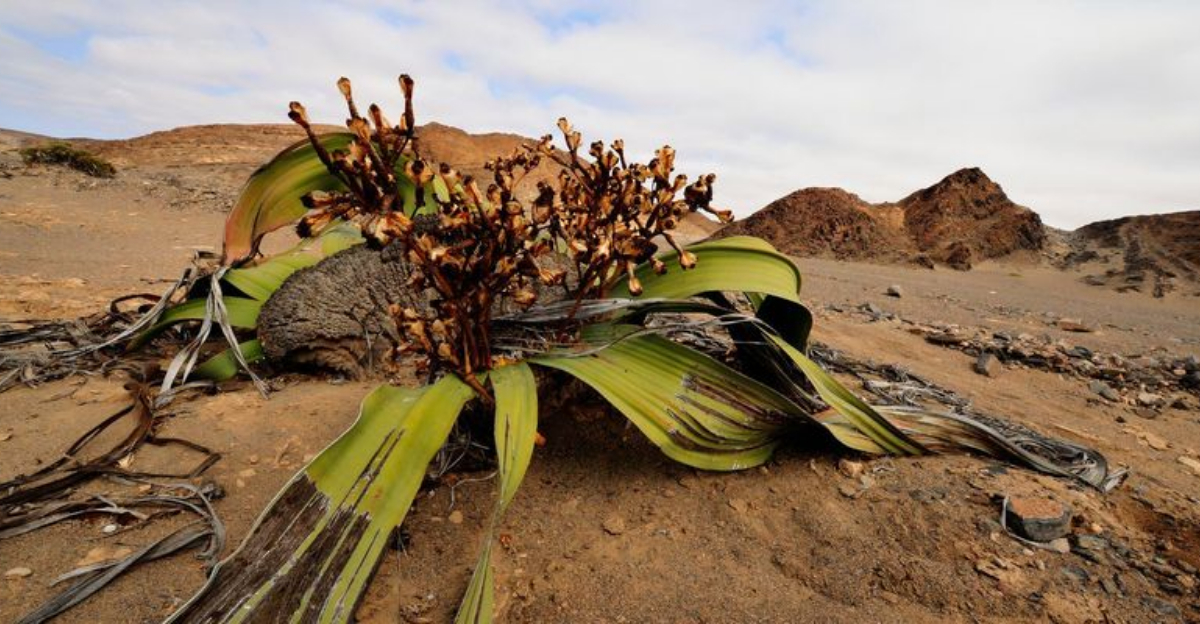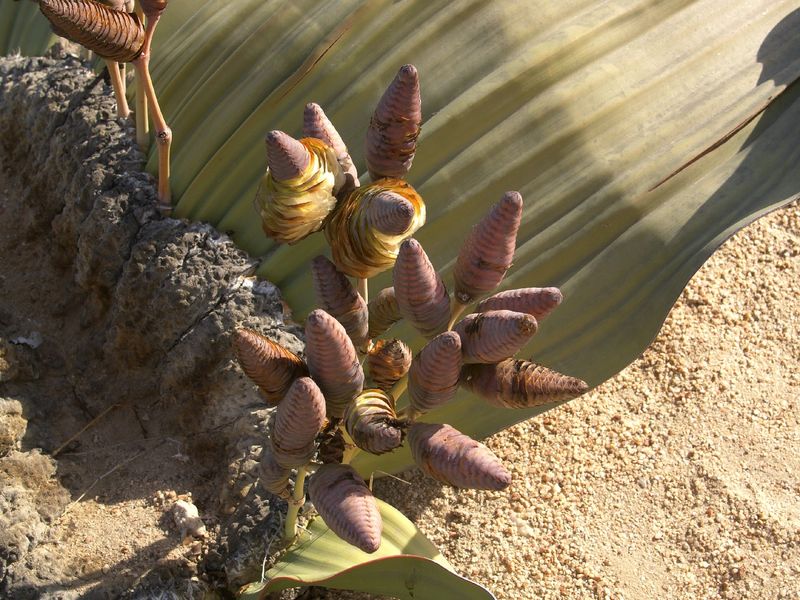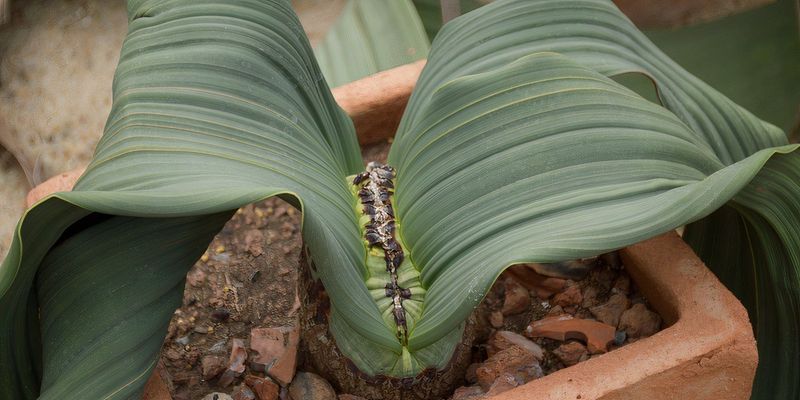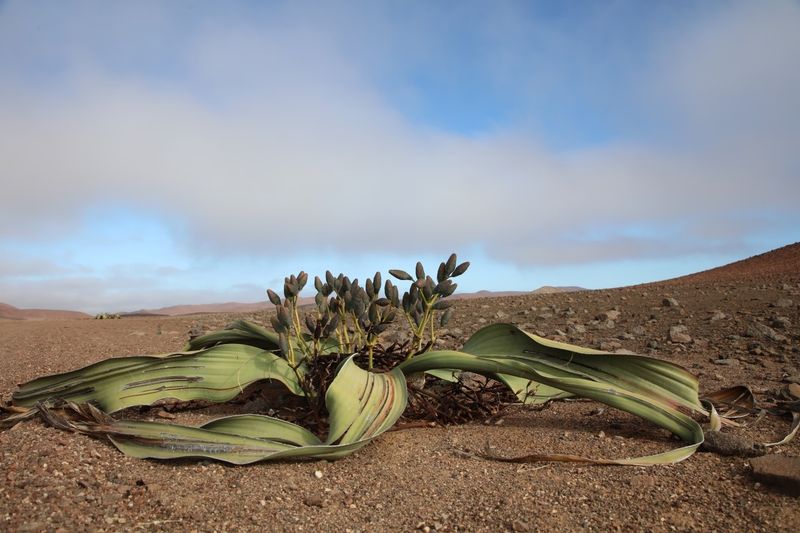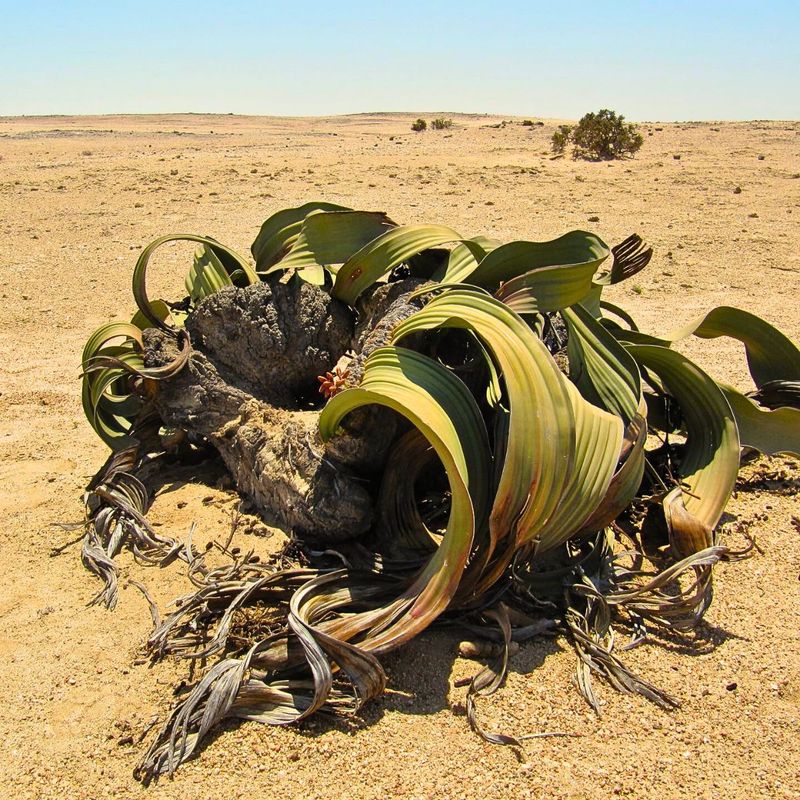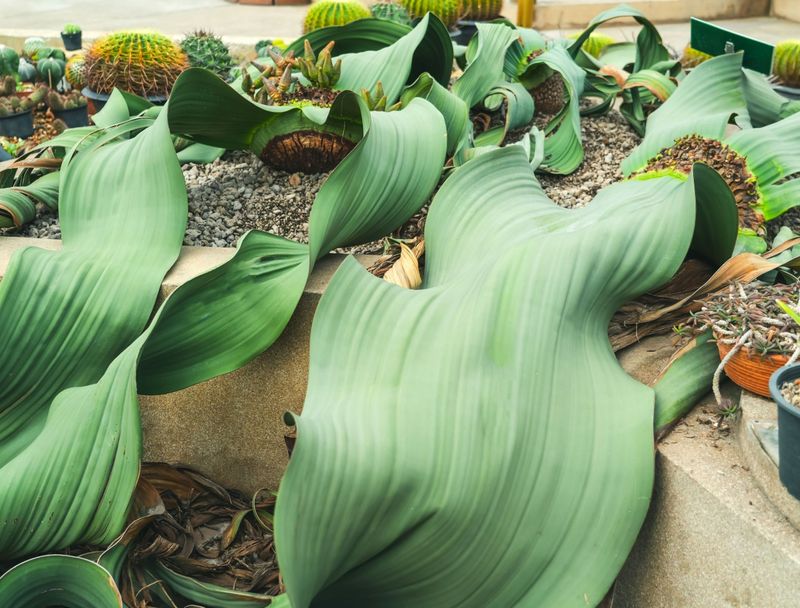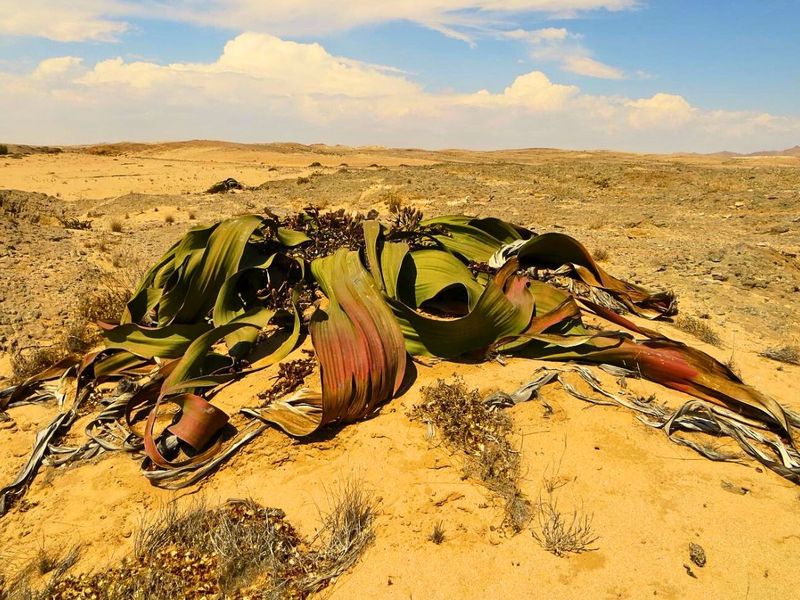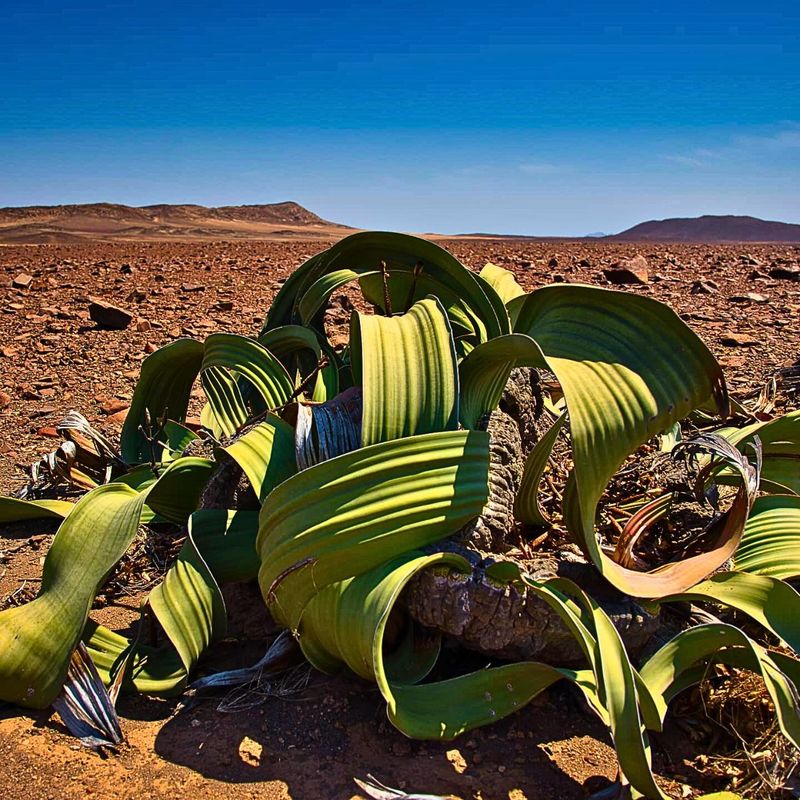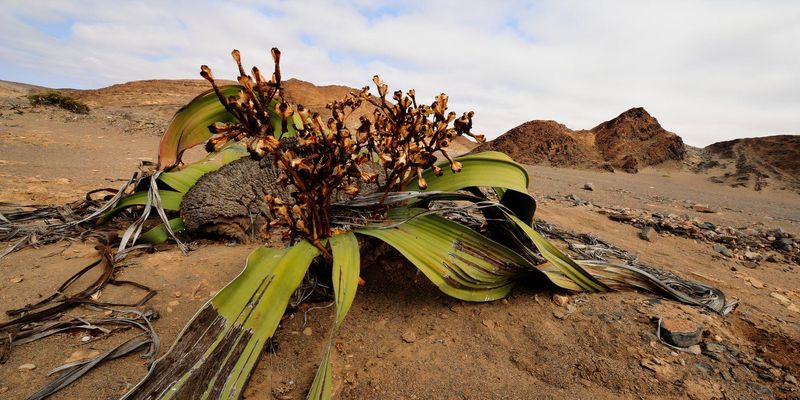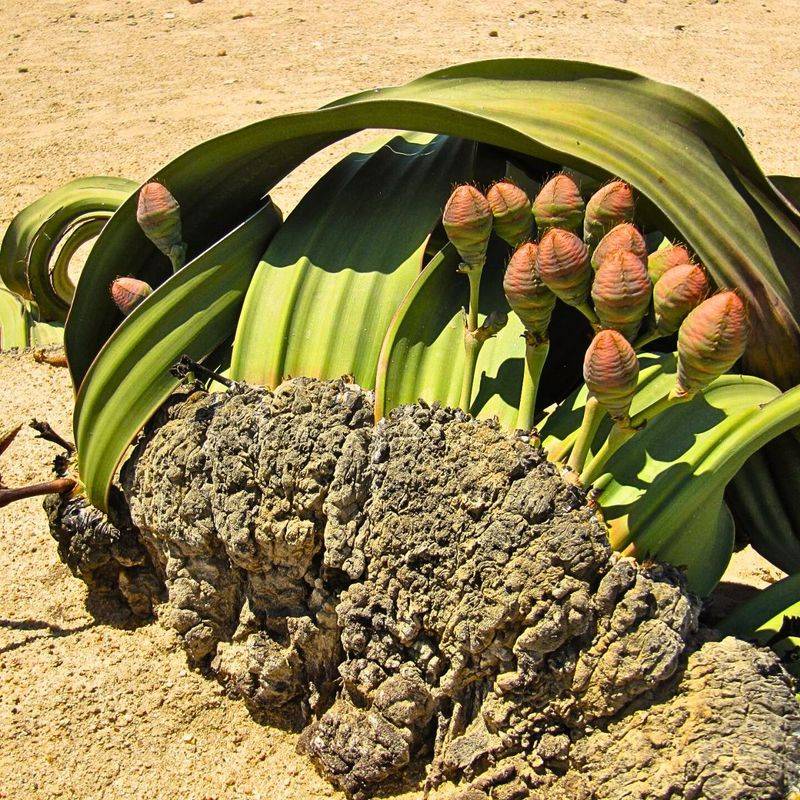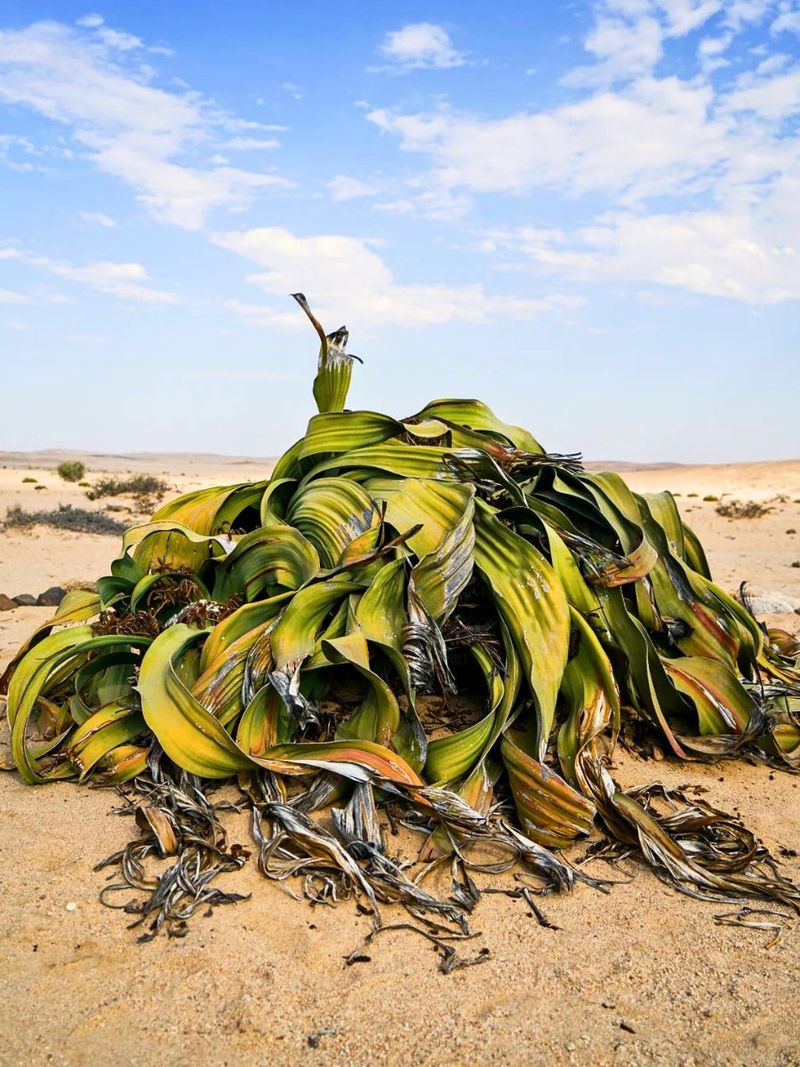Welwitschia mirabilis, a botanical marvel, stands as one of Earth’s oldest and most unique plants. Nestled in the arid landscapes of the Namib Desert, it defies conventional plant lifecycles and exhibits characteristics that have intrigued botanists for centuries.
With just two leaves that grow continuously, an appearance that defies its surroundings, and resilience that inspires awe, Welwitschia is more than just a plant; it’s a testament to nature’s ingenuity and persistence.
Explore ten fascinating facts about this remarkable survivor that highlight its extraordinary adaptations and long-standing history.
1. Named After a Botanist
Welwitschia is named after Dr. Friedrich Welwitsch, an Austrian botanist who discovered it in 1859. His discovery in the harsh Namib Desert brought this extraordinary plant to the world’s attention.
Dr. Welwitsch’s contribution to botany is immortalized through the naming of this unique species. His work laid the foundation for future research and exploration of Welwitschia’s unique traits.
The plant’s name serves as a tribute to his dedication and passion for the field of botany. Dr. Welwitsch’s legacy continues to inspire scientists and nature enthusiasts alike.
2. Ancient Origins
Welwitschia is not just a modern-day wonder but a link to our planet’s distant past. It has been around for millions of years, with origins tracing back to the age of the dinosaurs.
This ancient lineage makes it a living fossil, providing insights into prehistoric ecosystems. Its evolutionary path showcases a unique blend of characteristics that have allowed it to persist through various climatic changes.
By studying Welwitschia, scientists can gain valuable knowledge about plant evolution and adaptation. Its endurance over millennia highlights its remarkable adaptability and resilience against environmental changes.
3. Survival in Extremes
Welwitschia is a master of survival, thriving in the unforgiving Namib Desert. This plant endures extreme temperatures, minimal rainfall, and high winds that characterize its environment.
Its ability to extract moisture from fog that rolls in from the Atlantic Ocean is a vital adaptation for survival. Welwitschia’s leaves are specially adapted to capture and condense fog, providing the plant with essential hydration.
In such a harsh climate, where few plants can survive, Welwitschia stands out as a remarkable example of endurance and adaptation. Its resilience is a testament to nature’s ingenuity and persistence.
4. Unique Growth Pattern
Unlike any other plant, Welwitschia grows with just two leaves throughout its entire life. These leaves continuously grow from the base, often becoming frayed and splitting due to the harsh desert conditions.
This unique growth pattern reduces water loss and maximizes efficiency in capturing moisture. The leaves can grow several meters in length, creating a sprawling presence on the desert floor.
Such an unusual adaptation helps Welwitschia survive in an environment where water is scarce. This distinctive growth is a key factor in its survival and contributes to its extraordinary longevity.
5. Longevity Beyond Compare
Welwitschia is a symbol of endurance, with some plants living for over a thousand years. This extraordinary lifespan is rare in the plant kingdom, marking Welwitschia as a true survivor.
Its ability to withstand prolonged periods of drought and its slow growth contribute to its remarkable longevity. By conserving energy and resources, it can endure the harsh conditions of the desert.
This incredible lifespan not only fascinates botanists but also serves as a reminder of the resilience inherent in nature. Welwitschia’s ability to thrive for centuries is a testament to its adaptation and perseverance.
6. Unique Reproductive Cycle
Welwitschia has a unique reproductive process, producing male and female cones. This dioecious nature means separate plants bear male or female cones, promoting genetic diversity. The cones are pollinated by insects, a rare trait for desert plants.
This reproductive strategy allows Welwitschia to maintain its population despite the harsh environment. The ability to produce seeds that can survive in challenging conditions ensures its continuity.
This reproductive cycle is a critical component of its survival, allowing it to persist through the ages and continue its lineage.
7. Cultural Significance
Welwitschia holds cultural significance among the indigenous Himba people of Namibia. It is often referred to as a “desert octopus” due to its sprawling leaves. The plant is used in traditional ceremonies and is a symbol of endurance and survival.
Its presence in the Namib Desert is intertwined with the cultural narratives of the Himba, who have lived in harmony with this unique plant for generations.
Welwitschia’s resilience in the face of adversity resonates with the Himba’s history and lifestyle, making it an integral part of their cultural identity.
8. Adaptations to Arid Climate
Welwitschia’s adaptations to the arid climate are critical to its survival. Its thick leaves reduce water loss, while a deep root system anchors it firmly and taps into underground moisture.
The plant’s ability to survive on minimal water intake is an impressive feat of nature. These adaptations allow Welwitschia to thrive where few others can. Its survival strategies are a testament to the evolutionary processes that have shaped its existence.
By understanding Welwitschia’s adaptations, scientists gain insight into how life can persist in extreme environments, offering lessons in resilience and resourcefulness.
9. Scientific Curiosity
Welwitschia has been a subject of scientific curiosity since its discovery. Botanists and researchers are fascinated by its unique characteristics and survival strategies. The plant’s ability to thrive in such a harsh environment challenges conventional understanding of plant biology.
Studies on Welwitschia provide valuable insights into the adaptability and resilience of life forms. Its unusual traits offer a window into evolutionary processes and ecological interactions.
As scientists continue to study this remarkable plant, Welwitschia remains a source of inspiration and wonder, highlighting the complexity and diversity of life on Earth.
10. Conservation Efforts
Conservation efforts are vital to protect Welwitschia and its habitat. The Namib Desert, where it resides, faces threats from climate change and human activities. Efforts to preserve this unique plant involve studying its ecology and promoting sustainable practices.
Conservationists work to ensure that future generations can appreciate Welwitschia’s beauty and significance. By protecting its environment, we safeguard not only Welwitschia but also the diverse ecosystems it supports.
These efforts highlight the importance of preserving natural wonders and the delicate balance of our planet’s ecosystems.
